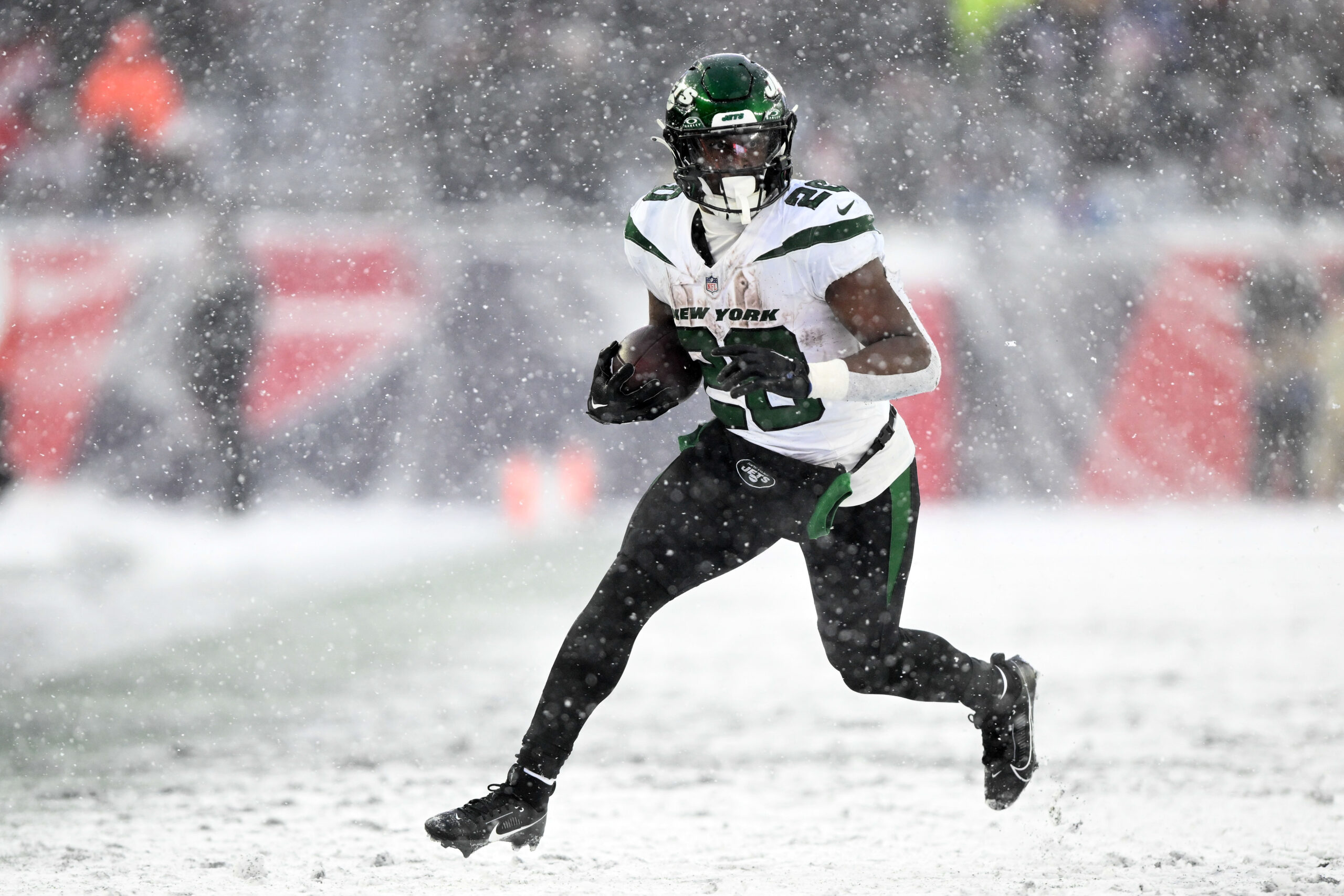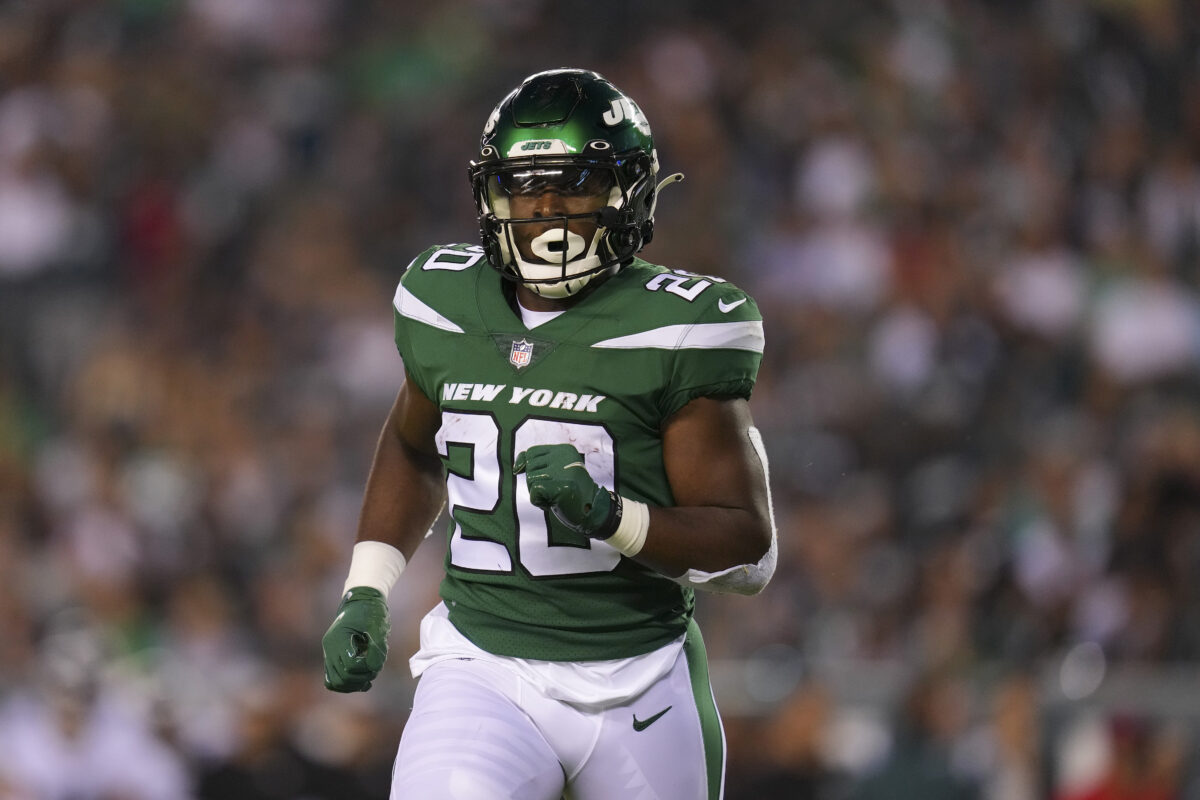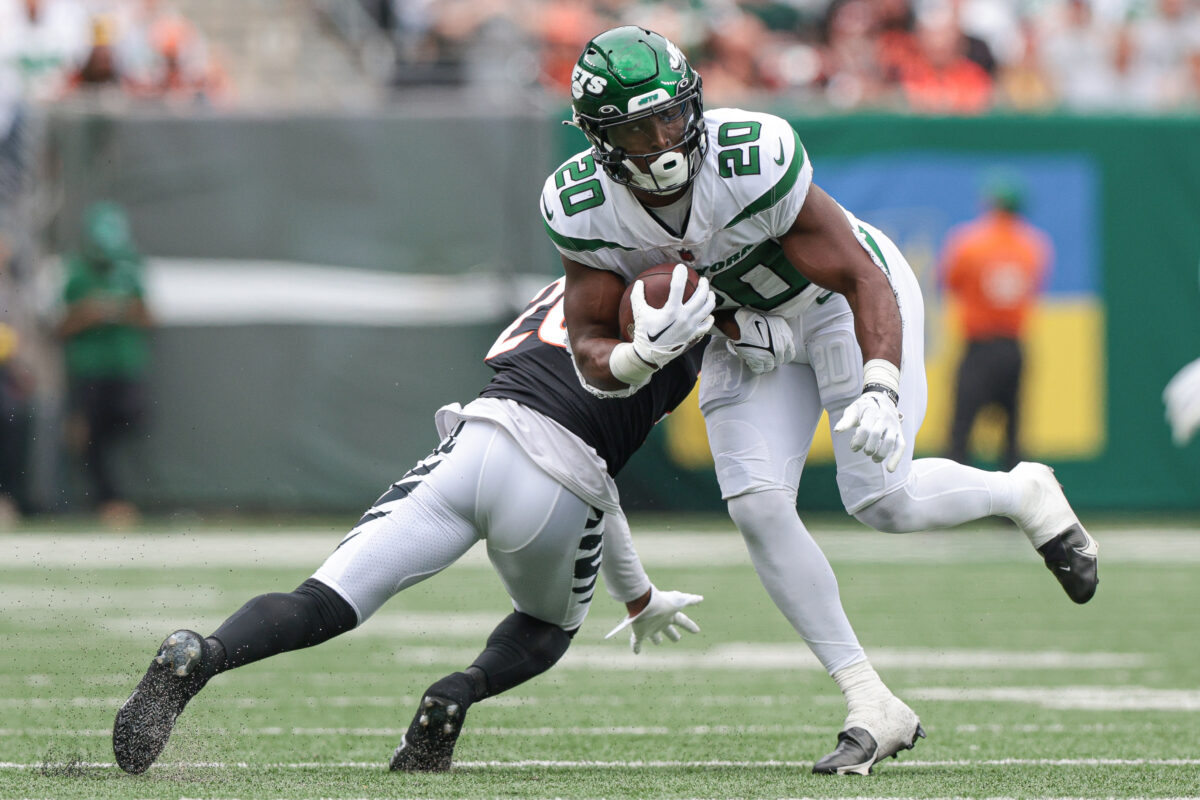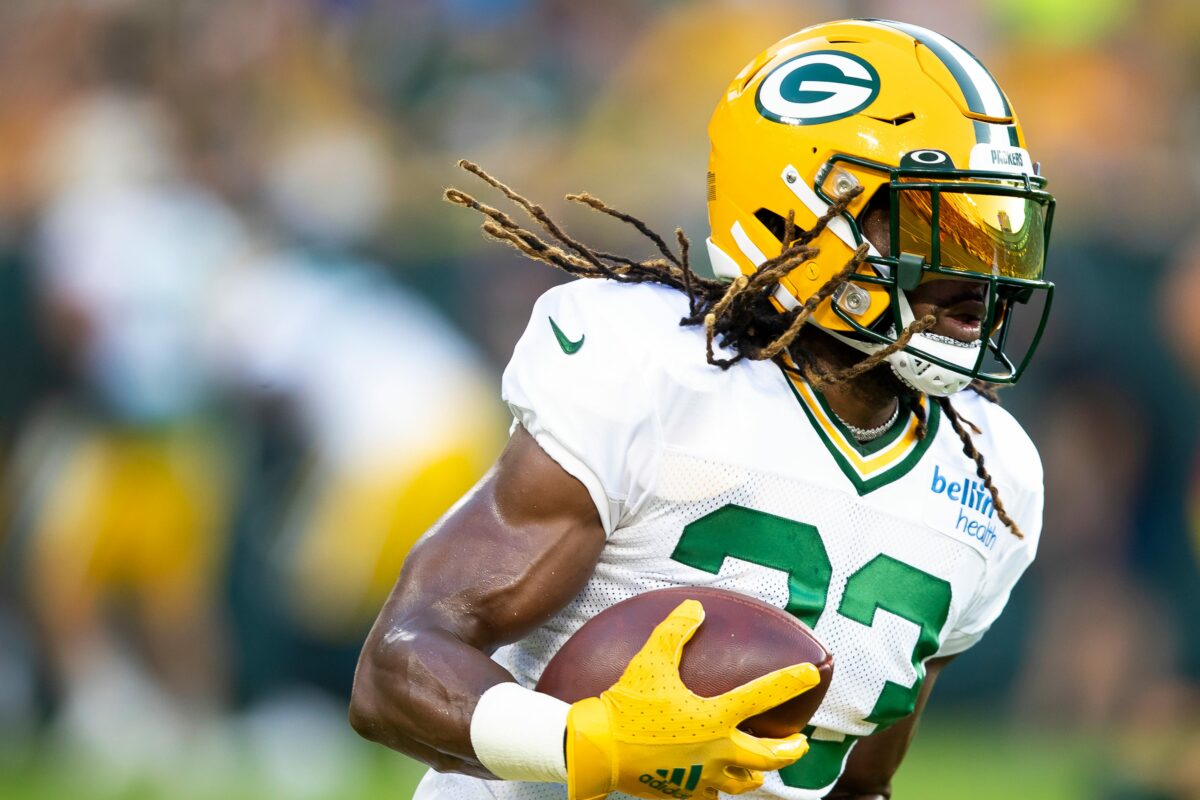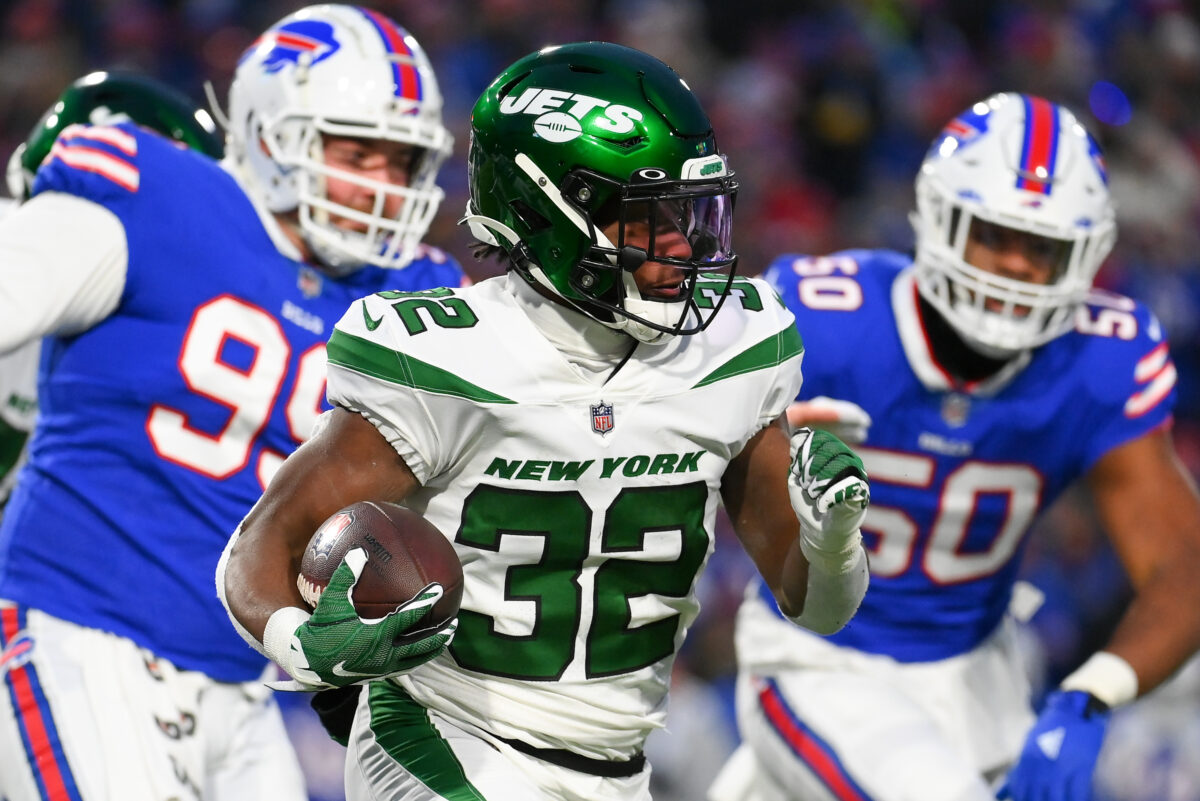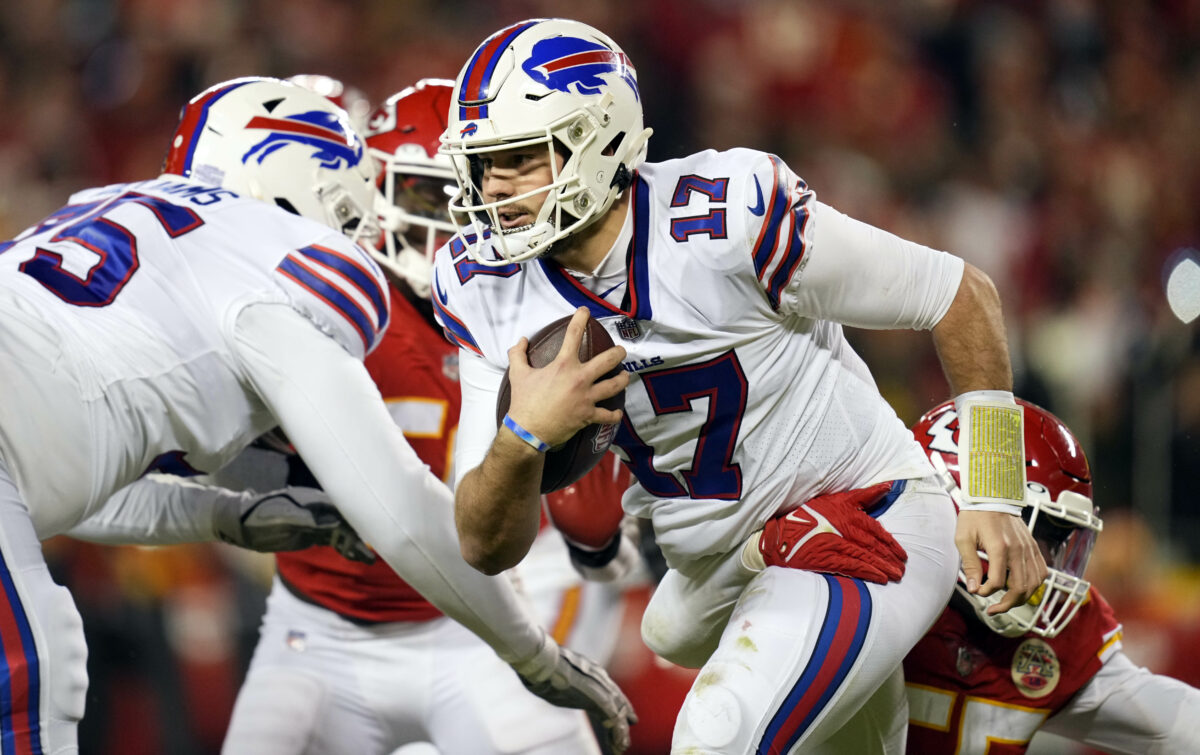Will the Jets sport a dangerous one-two punch at running back?
There was little to like about the New York Jets offense in 2021, which included a ground game that ranked 27th in the NFL at 98.1 yards per game (one of nine teams to manage fewer than 100 yards per contest last season). It’s established canon in the NFL that perhaps the best thing you can provide a young signal-caller is a quality running attack, and it’s something the Jets will try to do in 2022 for second-year quarterback Zach Wilson, who had more tribulations than triumphs as a rookie.
A strong running game is already in offensive coordinator Mike LaFleur’s coaching DNA, having spent formative years under San Francisco 49ers head coach Kyle Shanahan, who has consistently fielded clubs that excelled at running the ball. After posting an NFL-low 380 rushing attempts as a team in 2021, the Jets figure to be a lot more active in that department this season.
New York has made strides to upgrade its offensive line in the last two offseasons, and the defense should be inching closer to respectability under Robert Saleh.
Breece Hall
A highly productive back at Iowa State, Hall was the first running back selected in this year’s draft, going to the Jets with the 36th overall pick. He’s powerfully built at 5-foot-11, 217 pounds, and has proven he can handle heavy usage. Hall has excellent speed, especially for his size, and is difficult to bring down in the open field. He has room to improve as a pass catcher and blocker in pass protection, however, but Hall profiles well enough as a three-down back.
[lawrence-related id=466104]
While others on the depth chart have proven to at least be capable NFL backs, nobody else brings the all-around talent of Hall, who figures to be given every chance to earn the starting job. If he gets enough touches, Hall could deliver solid value as the Jets were tied for 11th in yards per carry last year, so it’s not as though they didn’t have some success when they called running plays.
Michael Carter Jr.
Hall’s arrival is expected to push Carter into a complementary role in Year 2. As a rookie the North Carolina product led the team in carries (147), yards (639), and touchdowns (4).
He’s on the smaller side, though, and may be better suited as the team’s primary passing-down option in the backfield thanks to his soft hands (he caught 36 passes in 2021). Carter possesses excellent speed and has the type of shiftiness that should serve him well in space.
Tevin Coleman
Imported from the 49ers after the Jets hired Saleh to be their head coach, Coleman is likely to be the fallback option if Hall and/or Carter scuffle in 2022. The veteran had some solid seasons early in his career with the Atlanta Falcons as part of a backfield combo with Devonta Freeman, but he mostly underwhelmed in two years with the 49ers and was decent at best with the Jets last year. There just doesn’t seem to be any explosiveness left — to that end, Coleman has 127 touches over his past two seasons with zero touchdowns.
Fantasy football outlook
The rest of the division has upgraded on offense, which could force the Jets into pass-heavy scripts. Both backs could be consistency victims to a “hot-hand approach” or a matchup-based role that favors a specific game plan.
Hall is the likely featured back, making him a strong RB3 with some real upside in an offensive scheme that’s proven repeatedly it can pump out productive backs. New commodities, especially at running back, tend to get overdrafted in fantasy, and Hall may be no different, depending upon the casualness of your league.
Carter should still get meaningful action, even in a support role, and would be a solid RB4 type. He’s a better value buy than Hall in redraft leagues but isn’t as appealing in dynasty formats.
Unless injuries claim one of the younger backs, you can forget about Coleman for fantasy purposes. He’s there in case something goes wrong.
